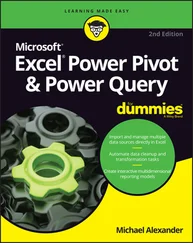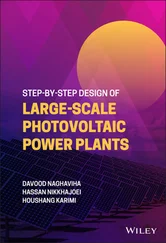1 Cover
2 Preface – Why This Book?
3 Acknowledgments
4 About the Author
5 1 Plant from Design to Commissioning 1.1 Planning 1.2 Project Development 1.3 Precommissioning and Commissioning 1.4 Project Economics Reference Note
6 2 Plant Key One‐Line Diagram 2.1 One‐Line Diagrams 2.2 The Electrical Project 2.3 Site Conditions 2.4 Connection to Power Utility 2.5 Main Plant Substation 2.6 Load Site Placement 2.7 The Key One‐Line Diagram 2.8 Transformer System Grounding 2.9 Transformer Winding Configurations and Phasing 2.10 Standby Power 2.11 Insulation Coordination 2.12 Plant Control System 2.13 Fire Protection Reference Note
7 3 Switching Equipment 3.1 MV Switchgear 3.2 Circuit Breakers 3.3 MV MCC Motor Controllers 3.4 LV Unit Substations 3.5 Motor Control Centers (MCCs) References
8 4 Designing Plant Layout 4.1 Plant Power Distribution Routes 4.2 Underground Installations 4.3 Plant Electrical Rooms 4.4 Plant Design 4.5 Transformer Vault Design 4.6 Plant Control Rooms References
9 5 System Grounding 5.1 Methods of Grounding 5.2 Specific Applications References
10 6 Site and Equipment Grounding 6.1 Requirements 6.2 Ground Potential Rise and Step and Touch Potential 6.3 Computer Study Report 6.4 Below Ground Equipment Grounding 6.5 Above Ground Equipment Grounding 6.6 Telecommunications in HV Substations 6.7 Fence Grounding 6.8 Plant Control System Grounding 6.9 Overhead Line Grounding 6.10 Remote Site Grounding 6.11 Effect of Overhead Ground Wires and Neutral Conductors References
11 7 Plant Lighting 7.1 The Big Picture 7.2 Lighting Design Criteria 7.3 Definitions 7.4 Illumination Level 7.5 Outdoor Building and Road Lighting 7.6 Lighting Hardware 7.7 Lamps Inside the Fixtures References
12 8 DC System, UPS 8.1 Project Requirements 8.2 DC Battery and Chargers 8.3 Battery Chargers 8.4 Ratings 8.5 Uninterruptible Power Supply (UPS) References
13 9 Plant Power Distribution 9.1 Plant Overhead Distribution 9.2 Types of Distribution 9.3 Structure (Pole) Types 9.4 Overhead vs. Underground 9.5 Clearances 9.6 Line Voltage Drop Calculations 9.7 Power Loss Calculations 9.8 Line Conductor Sag and Tension 9.9 Aerial Bundled Cable (ABC) Distribution 9.10 Line and Cable Charging Current References
14 10 Insulation Coordination, Lightning Protection 10.1 Economic Design 10.2 Overvoltages 10.3 Lightning Wave Phenomena and Propagation 10.4 Equipment Testing 10.5 Shielding 10.6 Equipment Withstand Capability 10.7 Arrester Selection 10.8 Motor Surge Protection 10.9 Building Lightning Protection References
15 11 Voltage and Phasing Standards 11.1 Supply and Utilization Voltages 11.2 System Phase Sequence 11.3 World Plugs/Sockets References
16 12 Cables and Supporting Equipment 12.1 Cables 12.2 Power Cables 12.3 Control and Instrumentation Cables 12.4 Specialty Cables 12.5 Cable Trays 12.6 Conduits and Accessories 12.7 Bus Duct or Cable Bus Systems References Note
17 13 Power Factor Correction 13.1 Power Factor and Penalties for Low pf 13.2 Leading and Lagging Power Factor 13.3 pf Correction 13.4 Power Factor at Diesel Engine Generating Plant 13.5 Voltage Improvement by Adding Capacitors 13.6 Harmonic Issues with the Capacitors 13.7 Other Applications References
18 14 Motor Selection 14.1 Motor Selection 14.2 Motor Characteristics 14.3 NEMA Torque Classification (Design Code) 14.4 NEMA, IEC Frame Sizes 14.5 NEMA Starter Sizes 14.6 Motor Enclosures 14.7 Large Motor Starting 14.8 Synchronous Motors 14.9 Motor Service Factor 14.10 Motor Starting Criteria 14.11 Premium Efficiency Motors References
19 15 Variable Frequency Drives (VFDs) and Harmonics 15.1 Why Are Variable Frequency Drives (VFDs) Needed? 15.2 Vector VFDs for Low‐Speed Operation 15.3 VFDs: Variable or Constant Torque? 15.4 Regenerative VFDs 15.5 Motor and Cable Harmonics Issues 15.6 How to Mitigate the Harmonics? 15.7 Harmonic Order Limits References Note
20 16 Relay Protection and Coordination 16.1 The Objective 16.2 IEEE Equipment and Device Designation 16.3 CTs and PTs 16.4 Relay Protection 16.5 Major Equipment Protection 16.6 Relay Coordination 16.7 Protection Function Elements 16.8 Time Grading 16.9 Time–Current Grading 16.10 Reclosing 16.11 Load Shedding and Automatic Quick Start of Generators 16.12 (86) Lockout and (94) Self‐Reset Trip Relays References
21 17 Plant Automation and Data Networking 17.1 Plant Control 17.2 Motor Controls Integration 17.3 Human Machine Interface (HMI) 17.4 PLC or DCS: What Is the Difference? 17.5 Data Networking 17.6 Means of Communication 17.7 Web‐based HMI 17.8 SCADA Applications and Communication Protocols in Power Industry References
22 18 Generation 18.1 Types of Generating Plants 18.2 Governors 18.3 Excitation: Control for Voltage and Reactive Power 18.4 Generator Circuit Breaker 18.5 Generator Step‐up Transformers 18.6 Heat‐Rate Curve 18.7 Hydraulic Turbine Cavitation 18.8 Generator Cooling 18.9 Plant Black Start 18.10 Synchronous Motor 18.11 Plant Capacity and Availability Factors References
23 19 Power Dispatch and Control 19.1 Plant and System Operation 19.2 Load – Frequency Control 19.3 Voltage Reactive Power Control 19.4 Line Transfers, Import/Export Power References
24 20 Diesel Engine Generator Plant and Standby Power 20.1 Gen‐Set Ratings and Classifications 20.2 Plant Design 20.3 Unit Performance 20.4 Plant Electrical One Line Diagram 20.5 Waste Heat Recovery (WHR) 20.6 Engines for Ships References Note
25 21 Reliability Considerations and Calculations 21.1 Definitions 21.2 Basic Reliability Engineering Concepts 21.3 Different Failure Rates vs. Time Scenarios 21.4 Estimating the System Reliability 21.5 Common Mode Failure 21.6 Availability References
26 22 Fire Protection 22.1 Plant Fire Protection System 22.2 Fire Sprinkler Systems 22.3 Gas Flooding Suppression 22.4 Fire Hydrants and Standpipes 22.5 Portable Fire Extinguishers 22.6 Fire Safety Dampers and Duct Vents 22.7 Deluge Systems 22.8 Fire Water Supply System 22.9 Cables and Conduits used for Fire Protection Circuits 22.10 Fire Detection and Notification Witness Testing References
27 23 Corrosion, Cathodic Protection 23.1 Process of Corrosion and Cathodic Protection 23.2 Galvanized Steel 23.3 Sacrificial Anodes 23.4 Impressed Current Application 23.5 Soil Resistivity 23.6 Cathodic Protection for Ships 23.7 Corrosion due to H2S Gas References
28 24 Brief Equipment Specifications and Data Sheets 24.1 Power Transformers 24.2 Motors up to 200 kW 24.3 Motors > 200 kW (Medium Voltage Motors) 24.4 VFD Specification Requirements 24.5 13.8 kV Isolated Phase Bus + PTs (IPB) 24.6 Electrical Enclosures 24.7 Technical Data Sheets References
29 25 Solar Power 25.1 Solar Resource 25.2 PV Panel Technology 25.3 Photovoltaic Plants 25.4 CSP 25.5 Thermal Storage 25.6 Conclusion References
30 26 Wind Power 26.1 Siting a Wind Farm 26.2 Wind Turbine Tower 26.3 Wind Resource 26.4 Wind Turbulence 26.5 Wind Turbine Design Classification 26.6 Blade Design for Optimum Energy Capture 26.7 Individual Pitch (Blade) Control (IPC) 26.8 Wind Turbine Design Limits 26.9 Wind Turbine Components 26.10 Generators Used with Wind Turbines 26.11 Turbine Sizes 26.12 Building a Wind Farm 26.13 Wind Energy in Cold Climates 26.14 The Effect of Rain on the Wind Turbine Performance 26.15 Wind Turbines in the Desert Environment 26.16 Cost, Component Percentage Share References
31 Index
32 End User License Agreement
1 Chapter 1 Table 1.1 Load list (simplified). Table 1.2 Cable list (simplified).
2 Chapter 2 Table 2.1 Secondary voltage for primary grid voltage. Table 2.2 Connected load. Table 2.3 Load list. Table 2.4 System BILs. Table 2.5 System lightning arresters.
3 Chapter 3 Table 3.1 MV switchgear ratings, ANSI Standards. Table 3.2 MV switchgear ratings, IEC Standards. Table 3.3 Breaker loading. Table 3.4 MV contactor duty.Table 3.5 Dry‐type transformers.Table 3.6 Load break switch ratings.Table 3.7 Starter selection.
Читать дальше












